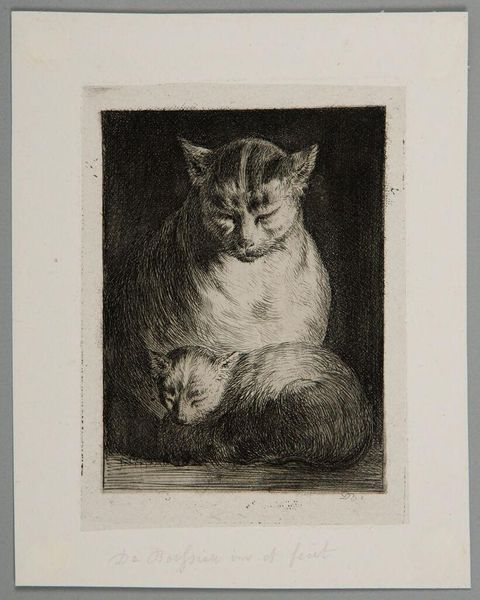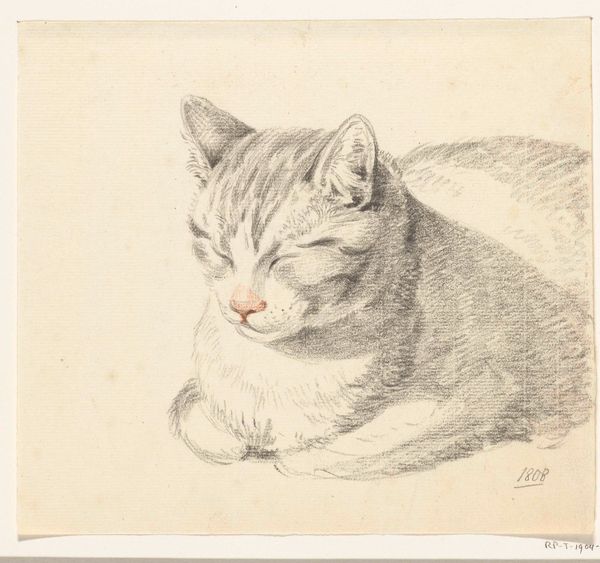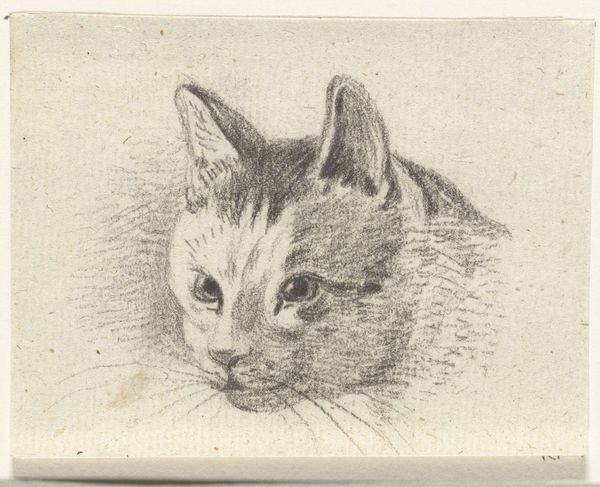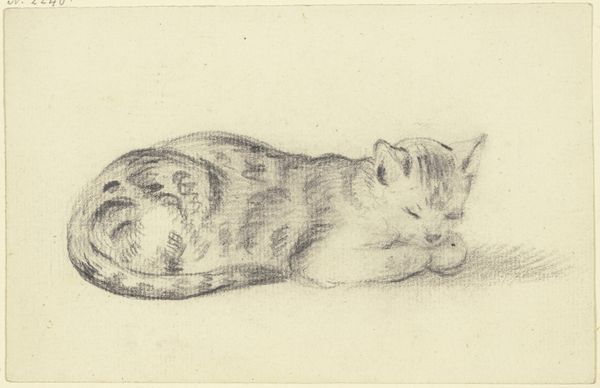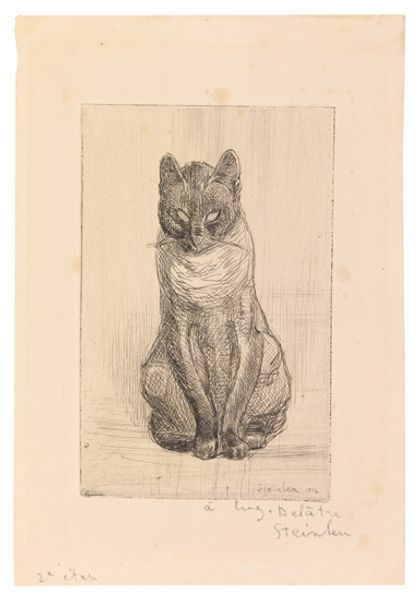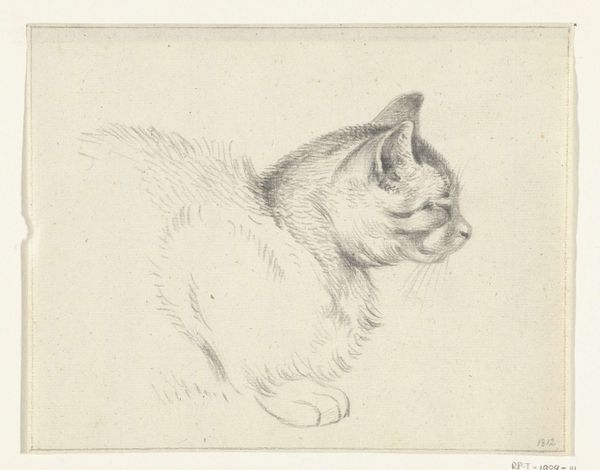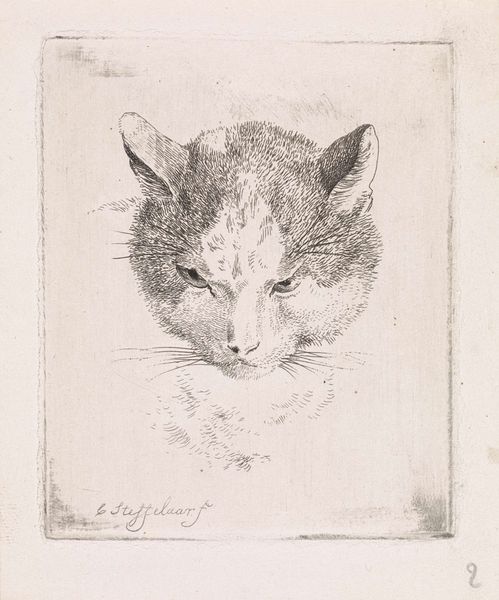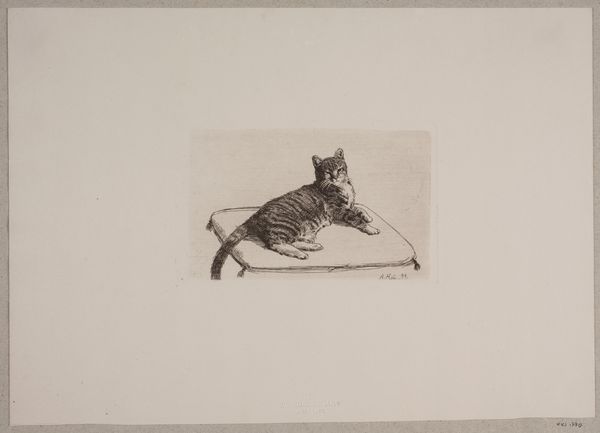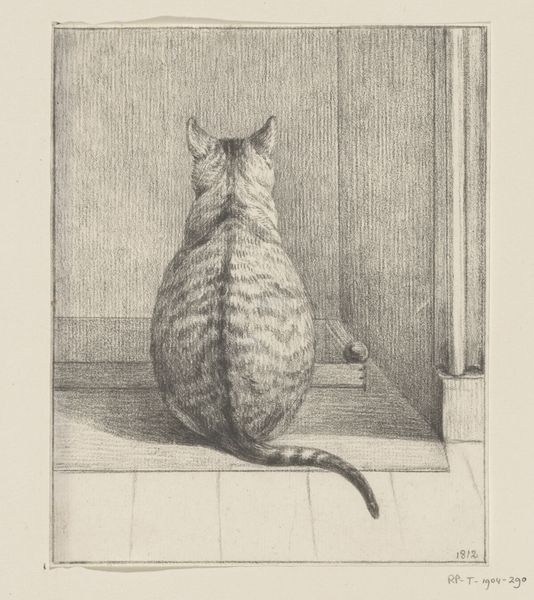
print, etching
#
animal
# print
#
etching
Dimensions: height 106 mm, width 77 mm
Copyright: Rijks Museum: Open Domain
Editor: Here we have Jean Jacques de Boissieu’s "Cat with her Young," made in 1803, an etching, so a kind of print. I am really drawn to its texture! What do you see in this piece? Curator: What I find compelling here is how Boissieu employs etching, a process fundamentally linked to mass production, to capture such an intimate and seemingly domestic scene. We must consider the socio-economic context: was this intended for wider distribution, potentially bringing imagery of motherhood and the domestic sphere to a broader audience beyond the elite? Editor: That's interesting. So, it's not just about the pretty picture of the cats, but also who got to see it and how it was made? Curator: Precisely! Etching democratizes image-making in a way painting doesn’t. The labor involved in producing these prints - the skilled labor, of course - is also significant. Consider how many impressions could have been made from a single plate, and the social impact that may have. Editor: I didn't really think of it that way, of art as having an industrial side to it. So, thinking about its production shifts our focus. It’s like the means of creation actually changes the meaning! Curator: Indeed. The artist is involved, but so too is the process, the materials, and the network that allows these prints to circulate. Are we looking at craft, commerce, or art? Where do these things blur? Editor: That is a great way to think about art, it goes way beyond what it represents on its surface! Curator: I think by interrogating materiality we gain a deeper appreciation of its reach and implications of art itself.
